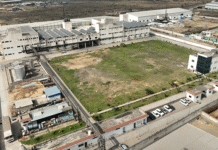
Inclement weather affecting key producing countries such as Brazil and Vietnam has played a key role in driving world coffee prices to a multi-year high in 2024 – increasing 38.8% on the previous year’s average, the Food and Agriculture Organization (FAO) has said in a report.
In December 2024, Arabica, the higher quality coffee favored in the roast and ground coffee market, was 58% up compared to a year ago. Robusta, used mainly for instant coffee and blending, saw a 70% price surge in real terms, states the FAO note on global coffee market trends. This marked a narrowing of the price differential between the two varieties for the first time since the mid-1990s.
2025 may not be favorable
FAO said coffee export prices may rise further in 2025 if major growing regions experience further significant supply reductions. The key factors behind the recent price increase include limited export quantities from Vietnam, reduced output in Indonesia, and adverse weather impacting coffee production in Brazil.
These are the top coffee-producing nations in the world. Brazil and Vietnam account for nearly 50% of world coffee production. Smallholder farmers play a vital role in the coffee industry, accounting for 80% of global coffee production.
One of the most widely consumed beverages worldwide, coffee provides livelihood to around 25 million farmers. India is the seventh-largest coffee producer globally with exports reaching US$1.29 billion in FY 2023-24, almost double the US$719.42 million in 2020-21, government data says. India’s coffee is primarily grown in the ecologically rich Western and Eastern Ghats. Karnataka leads in production, contributing 248,020 MT in 2022-23, followed by Kerala and Tamil Nadu.
The FAO report, however, does not mention any disruption in India even though the country’s coffee-producing regions have all been affected by erratic weather and excessive rainfall. Coffee pricing in India is also largely affected by global market trends.
In Vietnam, prolonged dry weather caused a 20% drop in coffee production in 2023-24, with exports falling by 10% for the second consecutive year. In Indonesia, coffee production in 2023/24 declined by 16.5% year-on-year on the back of excessive rain in April-May 2023 that damaged coffee cherries. Exports dropped 23%.
In Brazil, dry and hot weather conditions prompted successive downward revisions to the 2023-24 production forecast, with official estimates shifting from an anticipated 5.5% year-on-year increase to a 1.6% decline.
Shipping costs are a factor
Higher shipping costs also contributed to the increase in world coffee prices. Early data indicates that in December 2024, the increase in world prices translated into consumers paying 6.6% more for their coffee in the United States and 3.75% more in the European Union, compared to the same period in 2023.
“The high prices should provide incentives to invest more in technology and research and development in the coffee sector which relies largely on smallholder farmers – to increase climate resilience,” said Boubaker Ben-Belhassen, director of FAO’s markets and trade division, adding climate change is impacting coffee production in the longer term. FAO says it supports many of the coffee-producing countries to help farmers adopt climate-resilient techniques that also contribute to restoring biodiversity loss.
FAO highlights the importance of market transparency and encourages cooperation among all actors of the value chain to support sustainable growth in the global coffee sector and protect the livelihoods of millions of smallholder producers worldwide.
Global coffee production amounts to over $20 billion annually and the value of total coffee trade is estimated at over $25 billion per year. In 2023, world coffee production reached 11 million tons. In 2023, coffee export earnings accounted for 33.8% of total merchandise exports in Ethiopia, 22.6% in Burundi, and 15.4% in Uganda. In 2023, the largest coffee importers were the European Union and the United States of America. The global coffee industry generates over $200 billion in annual revenues.
IndiFoodBev — authentic, impactful and influential
An English-language food and beverage processing and packaging industry B2B platform in print and web, IndiFoodBev is in its third year of publication. It is said that the Indian food and beverage industries represent approximately US$ 900 billion in revenues which implies more than 20% of the country’s GDP. Eliminating the wastage on the farmside can help to deliver more protein to a higher number of the population apart from generating sizable exports. The savings in soil, seeds, water, fertilizer, energy and ultimately food and nutrition could be the most immense contribution that country is poised to make to the moderation of climate change.
To improve your marketing and grow sales to the food and beverage processing and packaging industry, talk to us. Our research and consulting company IppStar [www.ippstar.org] can assess your potential and addressable markets in light of the competition. We can discuss marketing, communication, and sales strategies for market entry and growth.
Suppliers and service providers with a strategy and budget for targeted marketing can discuss using our hybrid print, web, video, and social media channels to create brand recognition linked to market relevance. Our technical writers are ready to meet you and your customers for content.
The second largest producer of fruit and vegetables in the world is continuously expanding processing capacities and delivery systems with appropriate innovative technologies. We cover product and consumer trends, nutrition, processing, research, equipment and packaging from farm to thali. Get our 2025 media kit and recalibrate your role in this dynamic market. Enhance your visibility and relevance to existing markets and turn potential customers into conversations. Ask for a sample copy of our bi-monthly in print or our weekly IndiFoodBev eZine each Wednesday.
For editorial info@ippgroup.in — for advertisement ads1@ippgroup.in and for subscriptions subscription@ippgroup.in
Naresh Khanna – 10 February 2025
Subscribe Now











